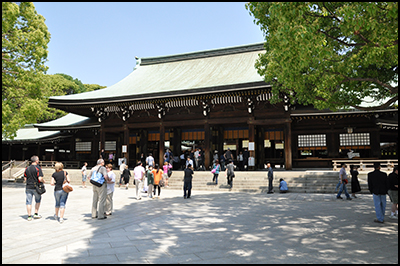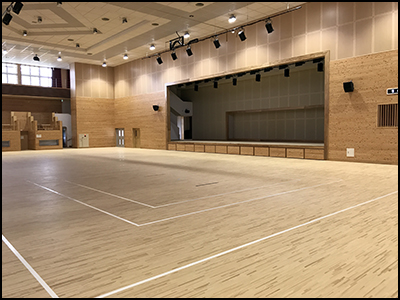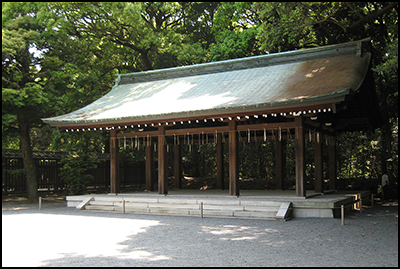

| ||
MARTIAL ARTS CULTURAL CENTER - LAYOUT |
|
| CLICK TO SEE VIDEO | |
The Martial Arts Cultural Center (Center) has been carefully designed with the following configuration to accomplish all its functions: Center Complex: the Martial Arts Cultural Center will consist of a series of buildings and structures spread across 15 acres that in all will constitute an environment that will help any visitor feel the sensation to be in a traditional Japanese setup. In exchange, that traditional environment will allow practitioners to have a full emersion of their practice. |
|
 |
Perimeter Wall and Gates: the complex will be surrounded by a perimeter wall to demark the distinctive separation between the inside and the outside of the Martial Arts Cultural Center. As part of this structure, the perimeter wall will have two access gates, a main gate and a secondary gate. As the name indicates the main gate will constitute the primary entrance to the Center complex and will be used on a daily basis. The secondary gate will be an alternate point of access to the complex. This gate will be open during special events at the Center to facilitate faster access to the complex due to the extra amount of people attending. Both, the perimeter wall and the gates will be designed in a Japanese architecture style. |
| Gardens: as soon as the visitors will cross the main gate of the Martial Arts Cultural Center they will be exposed to the beautiful and delicate design of the Japanese gardens of the Center. The gardens not only will be a great element to bring relaxation and peace of mind to those enjoying a simple walk through them, but will also be a good tool for those training at the Center to obtain the right set of mind to maximize their peak performance. The serene design of the gardens will be guided by the gravel paths surrounded by water ponds and the landscape. The landscape will include trees, bushes, and ground cover as well as rock scape. Koi fish will be an important element of the water ponds. Rock Japanese lanterns Tōrō will be found along the path of gravel and the landscape. |
 |
 |
Buildings Design: all the Martial Arts Cultural Center buildings will be constructed under the guidelines of the old Japanese architecture. The main building will be located in the center of the complex as a representation of the heart of it and will be located at the end of the road coming from the main gate welcoming all the visitors to the Center. The main building will have a concrete patio in front of the structure to allow ceremonies of introduction for large groups. The main building will be connected at both ends on the back by two additional buildings under the same Japanese design as part of the center of the complex. |
| Japanese Culture: from the initial access to the main building, visitors will be immersed in the Japanese Culture by getting exposed to simple but important customs such as removing their shoes at the entrance of the building, bowing when entering training areas, etc. |  |
 |
Main Building Training Floor: the training floor of this building will be constructed from wood with a spring system underneath to absorb training impact. This training floor will be dedicated primarily to the practice of martial arts systems such as Karate, Kobudo, Iai-Do and Kendo that will benefit from that particular type of floor. |
2nd Building Training Floor: the training floor of the second building will be of the type of traditional Japanese Tatami (soft training mat) to allow the practice of martial arts that involve constant take downs or ground practice. The training floor of this building will be very beneficial for the practice of Arts such as Aikido, Aikijuijitsu, Judo and nage waza techniques (take downs) from Karate. |
 |
 |
3rd Building: the third building will allocate the dorms for visiting instructors and practitioners visiting the Martial Arts Cultural Center for extended periods of time. This building will also contain classrooms to allow practitioners to have the proper installations to be able to learn about the Japanese language, Zen meditation, spirituality, Japanese calligraphy, etc. |
| Outdoor Training Dojo (training hall): the Budo Bunka Kaikan will feature an outdoor training structure to facilitate martial arts practice away from the main buildings. The structure will contain a heavy rain resistant roof to permit practitioners to continue with their training even during rainy conditions. Due to the nature of the outdoor location, the structure will have a non-rough concrete floor for long lasting durability as well as easy maintenance. The outdoor Dojo will have on one side of the structure, protected under the roof, 10 permanent training makiwara (wood striking posts). Also the training structure will have the capability to have heavy bags hung from the inside and bottom of the roof, also protected from the weather. |  |
 |
Outdoor Dormitories: the complex will also include a structure that will allocate dormitories equipped with kitchen, restrooms, showers, and a place to sleep for large groups and few rooms. The 10,000 square feet single level building will have an eating section and a traditional Japanese tatami floor sleeping area. Considering that the Center will promote and conduct Gasshuku (3 or 4 days martial arts training camps) throughout the year at the main building, attendees will be able to stay on the grounds throughout the whole event. The Japanese word Gasshuku translates “to train, eat and sleep under the same roof”, emphasizing the concept of maximizing training opportunities as well as the bonding of all participants. |
Budo Centre, Inc. a 501-C Non-Profit organization, Franco Sanguinetti President |
||
Copyright © 2003~2025 |
||
| Please DO NOT COPY any material or photos without our approval | ||